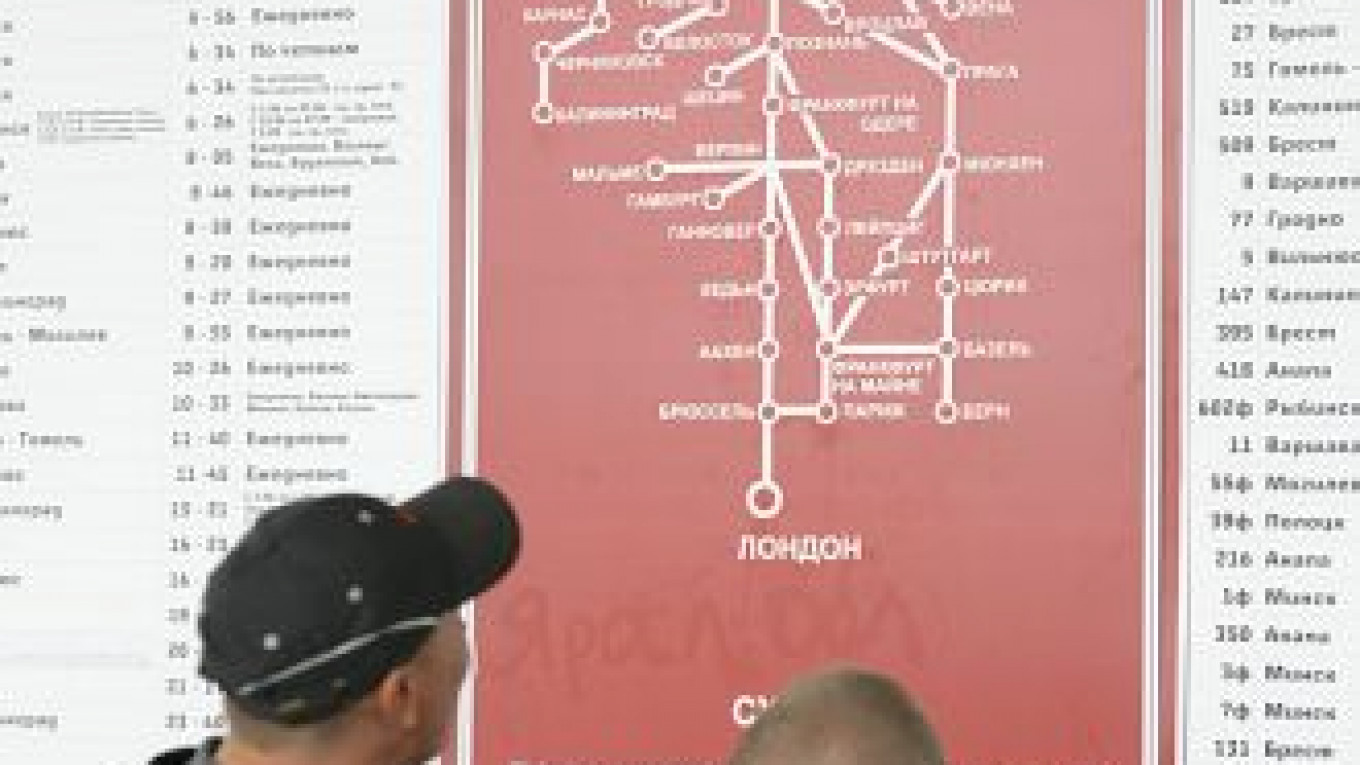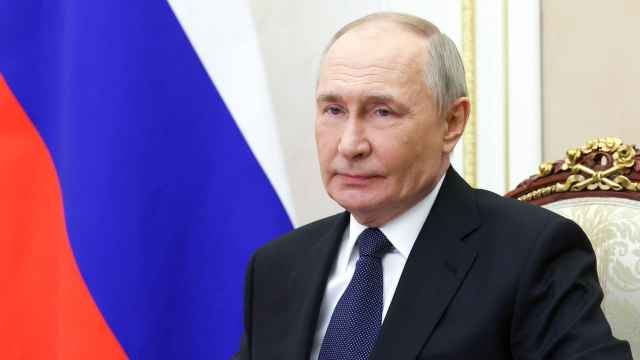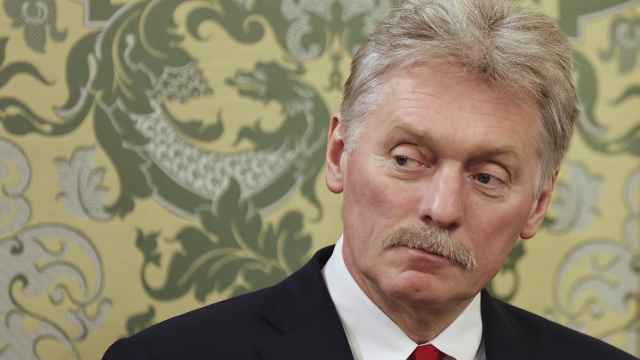On a drizzly Friday afternoon, the Russian Railways train to Warsaw steams impatiently in its berth at Moscow's Belorussky Station. A few would-be travelers roam the platform, hoping to find an extra ticket on the sold-out train.
Full occupancy is not unusual for the train, which departs daily, said conductor Larisa Shumova, who has worked this route for eight years.
| Route | Duration
(hours) | Cost
(2nd class) |
| Beijing | 132:29 | 7,810 rubles ($255) |
| Berlin | 27:09 | 7,170 rubles ($235) |
| Budapest | 39:04 | 3,950 rubles ($130) |
| Helsinki | 14:10 | 4,430 rubles ($145) |
| Nice | 52:55 | 13,150 rubles ($430) |
| Prague | 31:21 | 7,020 rubles ($230) |
| Ulan-Bator | 100:55 | 10,770 rubles ($350) |
| Warsaw | 17:45 | 3,680 rubles ($120) |
“We always have passengers … traveling both abroad and within the CIS,” Shumova said, referring to the stops the train makes in Russia and Belarus before reaching Poland.
Furthermore, the demand for tickets is increasing, she said.
With international bus companies and budget airlines continuing to enter the Russian transportation market — most recently, Dubai-based budget airline Flydubai added flights to Yekaterinburg and Samara at the end of October — Russian Railways faces increased competition for international travelers' business.
However, the Federal Passenger Company, a newly created Russian Railways subsidiary that oversees long-distance passenger routes to destinations both inside and outside Russia, says its international routes are in high demand.
Although flying is faster, it's not as reliable or pleasant as train travel, said engineer Daniil Litvinov, 27, who has taken the train from Moscow to Berlin twice.
“Traveling on the train is a journey of pleasure, if, of course, you can spare the time,” Litvinov said. “You can watch how one reality changes into another, night into day.”
The resurgence in rail travel follows a dip in passenger traffic in 2009, when 27 percent fewer passengers traveled on international routes. The Russian Railways group of companies still enjoys a monopoly on long-distance domestic and international train travel.
The Federal Passenger Company has continued to offer new international train itineraries, including the reopening of a tsarist-era train route between Moscow and Nice, France, in September and the creation of a high-speed route between St. Petersburg and Helsinki due to begin running in December. The company currently operates 14 international trains and 38 direct train cars on routes to 31 countries in Europe and Asia. Of these, the majority — nine trains (including two to Beijing) and 21 train cars — depart from Moscow.
Whereas the company relies on government subsidies for passenger transport within Russia, international passenger routes can be profitable, said Alexander Lukyanov, spokesman for the Federal Passenger Company. The profitability of routes depends on factors including the itinerary, time of year and marketing strategy, he said.
Lukyanov promised new international passenger routes within the next two years, but pointed out the difficulty of negotiating agreements with foreign railways for the use of their tracks. International trains also often include both Russian and foreign railcars on various sections of the route.
“It depends not only on the marketing vision; it also depends on the relationship with the railways in the other country,” Lukyanov said, declining to provide further details.
By the Numbers
Although Russia has the third-largest railway in the world by total passenger turnover, passenger travel accounted for only about 13 percent of Russian Railways and its subsidiaries' total revenues from 2007 to 2009, according to the preliminary prospectus for Russian Railways' debut eurobond issue in March. Nonetheless, the railway transports well over 100 million passengers on domestic and international long-haul routes (routes of 200 kilometers or more) each year.
But several obstacles could hinder the development of the international train travel to and from Russia, transportation analysts said.
International passenger rail transportation has the potential to be more profitable than domestic travel because ticket prices are not set artificially low and the service is oriented toward a more well-to-do segment of the population, said Anna Kupryanova, a transportation analyst with UralSib. This sector will not grow significantly, however, without further improvements to the existing rail infrastructure, much of which dates to the Soviet area, she said. For instance, better rails are needed to put in more high-speed train routes.
“For the active development of [international passenger transport], in my opinion, we need the development of rail infrastructure, the reduction of transit times and the purchase of newer trains,” Kupryanova said.
In particular, laying new rails would allow trains to travel faster and facilitate the creation of high-speed routes, she said.
This year, Russian Railways has funded large infrastructure development projects while also raising further funds from international investors. The group of companies sold $1.5 billion of debt in its first bond issue in March and plans to raise a total of $4.8 billion by 2012 with initial public offerings from several of its subsidiaries. In addition, Prime Minister Vladimir Putin allocated 40 billion rubles ($1.3 billion) to Russian Railways in October in support of the “development and reconstruction of its infrastructure.”
According to its eurobond prospectus, the group plans to invest about $1.5 billion in long-haul passenger rolling stock between 2010 and 2012, among other areas.
Planned infrastructure improvements, however, won't ameliorate that perennial hassle of international rail transport between the former Soviet Union and its neighbors: the greater width of its railroad tracks. The vast majority of track in the Commonwealth of Independent States and Mongolia is 85 millimeters wider than the standard gauge employed throughout most of Europe and Asia.
The change of wheels required on many routes outside the CIS can dampen the amount of international train travel, said Troika Dialog analyst Kirill Kazanli. Trains often stand several hours at border crossings where the wheel span must be switched.
“It makes travel from Russia to Europe not as smooth as it is within Europe,” Kazanli said. “It's not extremely serious, but yes, it does hinder international train service.”
But restrictions on private investment pose the biggest impediment to growth, analysts said. Although Russian Railways has called for increased outside investment in both freight and passenger rail transport, it limits opportunities for private investors in the passenger rail industry. In its prospectus, Russian Railways states that private participation is confined to ownership, leasing and operation of railcars, noting that “the environment of limited competition in [passenger rail] markets will remain for the foreseeable future.”
As of earlier this year, only three private operators were involved in long-haul passenger transport, as compared with about 2,000 private railcar operators involved in freight.
“Is more private investment needed? It depends on the conditions,” Kupryanova said. “If they won't liberalize the market, who will make sure prices are fair?”
Pluses and Minuses
From the consumer's standpoint, the decision to take the train versus buying a plane ticket has both its advantages and disadvantages. A plane travels faster and goes through fewer customs checkpoints. In some cases, it can even be cheaper: A second-class one-way ticket on the Russian Railways train from Moscow to Berlin costs about 7,150 rubles ($230) depending on the euro exchange rate, but a flight on a budget airline can cost as little as 3,650 rubles ($120). On the other hand, an international train passenger in general faces less stringent baggage restrictions and enjoys greater comfort and easier access to his or her point of departure.
Shumova said passengers ride international trains such as the Moscow-Warsaw route because they're affordable and convenient, and passengers don't have to battle Moscow traffic getting to one of the city's three airports. Demand is growing as more people get Schengen visas and tour companies buy up tickets, she said.
“It's simple enough to arrange a visa, and people are traveling abroad, so there is demand,” she explained.
However, inter-CIS travel still makes up the majority of traffic: Of the 20.1 million total international passengers who rode Russian Railways in 2009, only 1.16 million passengers traveled from and to countries outside the former Soviet Union.
Passengers said border crossings both inside and outside of the CIS can be a major hassle. Programmer Pyotr Parkhalin crossed the Belarussian, Ukrainian, Polish and Czech borders on the train from Moscow to Prague last year, and the redundant customs checks grew annoying, he said.
“There weren't any complications at the border, but the customs agents came through twice at every crossing,” he said. “Before Ukraine, the Russians checked, then the Ukrainians came through at the same place.”
Student Anna Han, 20, who took the Moscow-Beijing train in 2007, remembers waiting nearly eight hours at the border as customs agents checked passengers' documents and baggage and railroad employees changed the wheel-span on the train. She said both Chinese and Russian customs agents were rude and unprofessional, and that Russian agents immediately began yelling at passengers who had difficulty understanding Russian.
“This was the biggest minus,” Han said. “Their attitude toward their job is very bad. They're not fair, not well-behaved, not nice.”
In addition, both Russian and Chinese border patrol and customs agents sought out reasons to write large fines, and some agents even took bribes from passengers, she said.
A spokesman from the Federal Customs Service said he could not “imagine a situation when [customs agents] would take bribes,” but said that he would need more details to comment on Han's complaint. Even when told the month of Han's border crossing, a Federal Border Service spokesman declined comment, saying he needed the exact date so he could check with officials at the crossing point.
The Chinese General Administration of Customs asked for a faxed request for comment early last week but had not replied by Monday.
Photographer Irina Beck, 46, who took the inaugural train on the restored route between Moscow and Nice, said rail travel offered a vacation all in itself. Despite the price — 21,000 rubles ($680) one way in the mid-priced business class — the train trip provided a “very good rest from the stress and speed” of life in Moscow, she said.
“You're not just traveling from Point A to Point B,” Beck said. “The whole way is very beautiful and interesting. In the Alps … it's as if you're watching a movie.”
A Message from The Moscow Times:
Dear readers,
We are facing unprecedented challenges. Russia's Prosecutor General's Office has designated The Moscow Times as an "undesirable" organization, criminalizing our work and putting our staff at risk of prosecution. This follows our earlier unjust labeling as a "foreign agent."
These actions are direct attempts to silence independent journalism in Russia. The authorities claim our work "discredits the decisions of the Russian leadership." We see things differently: we strive to provide accurate, unbiased reporting on Russia.
We, the journalists of The Moscow Times, refuse to be silenced. But to continue our work, we need your help.
Your support, no matter how small, makes a world of difference. If you can, please support us monthly starting from just $2. It's quick to set up, and every contribution makes a significant impact.
By supporting The Moscow Times, you're defending open, independent journalism in the face of repression. Thank you for standing with us.
Remind me later.






